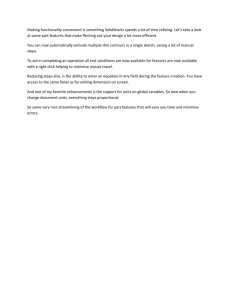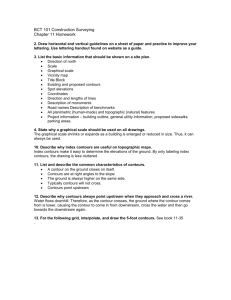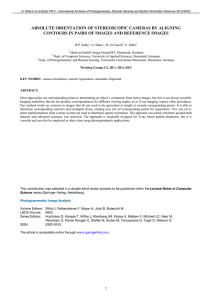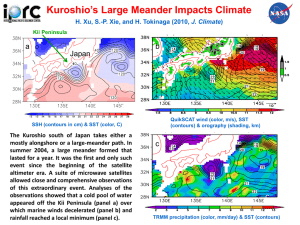Comparison of Contour-to-CT Registration
advertisement
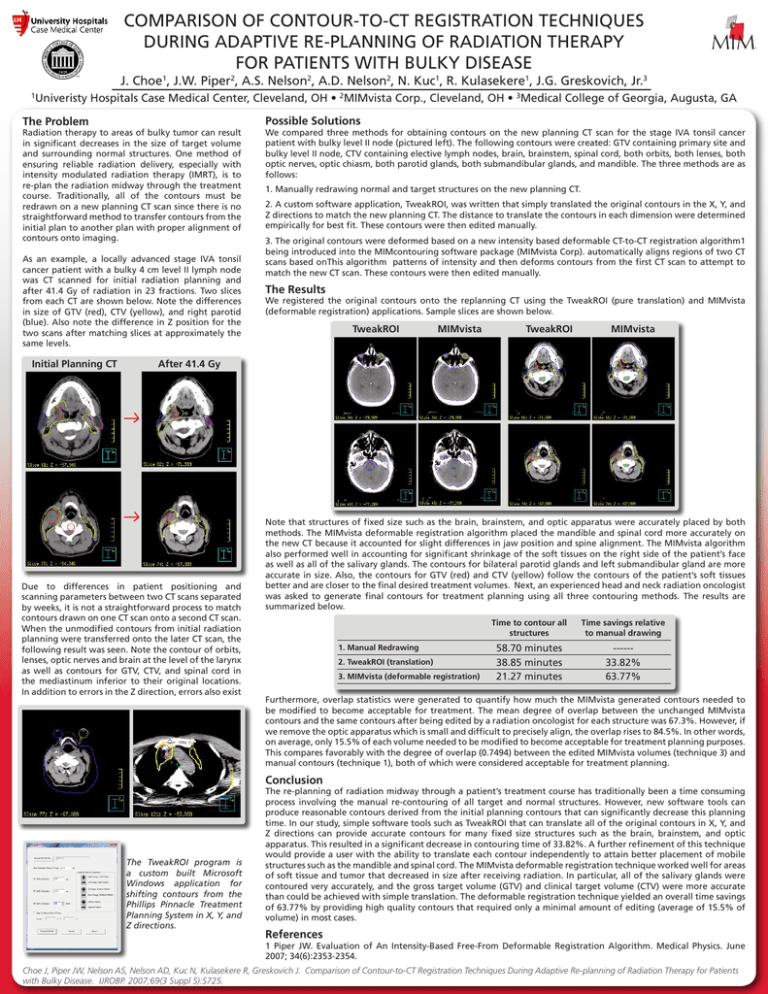
COMPARISON OF CONTOUR-TO-CT REGISTRATION TECHNIQUES DURING ADAPTIVE RE-PLANNING OF RADIATION THERAPY FOR PATIENTS WITH BULKY DISEASE J. Choe1, J.W. Piper2, A.S. Nelson2, A.D. Nelson2, N. Kuc1, R. Kulasekere1, J.G. Greskovich, Jr.3 1 Univeristy Hospitals Case Medical Center, Cleveland, OH • 2MIMvista Corp., Cleveland, OH • 3Medical College of Georgia, Augusta, GA The Problem Radiation therapy to areas of bulky tumor can result in significant decreases in the size of target volume and surrounding normal structures. One method of ensuring reliable radiation delivery, especially with intensity modulated radiation therapy (IMRT), is to re-plan the radiation midway through the treatment course. Traditionally, all of the contours must be redrawn on a new planning CT scan since there is no straightforward method to transfer contours from the initial plan to another plan with proper alignment of contours onto imaging. As an example, a locally advanced stage IVA tonsil cancer patient with a bulky 4 cm level II lymph node was CT scanned for initial radiation planning and after 41.4 Gy of radiation in 23 fractions. Two slices from each CT are shown below. Note the differences in size of GTV (red), CTV (yellow), and right parotid (blue). Also note the difference in Z position for the two scans after matching slices at approximately the same levels. Initial Planning CT Possible Solutions We compared three methods for obtaining contours on the new planning CT scan for the stage IVA tonsil cancer patient with bulky level II node (pictured left). The following contours were created: GTV containing primary site and bulky level II node, CTV containing elective lymph nodes, brain, brainstem, spinal cord, both orbits, both lenses, both optic nerves, optic chiasm, both parotid glands, both submandibular glands, and mandible. The three methods are as follows: 1. Manually redrawing normal and target structures on the new planning CT. 2. A custom software application, TweakROI, was written that simply translated the original contours in the X, Y, and Z directions to match the new planning CT. The distance to translate the contours in each dimension were determined empirically for best fit. These contours were then edited manually. 3. The original contours were deformed based on a new intensity based deformable CT-to-CT registration algorithm1 being introduced into the MIMcontouring software package (MIMvista Corp). automatically aligns regions of two CT scans based onThis algorithm patterns of intensity and then deforms contours from the first CT scan to attempt to match the new CT scan. These contours were then edited manually. The Results We registered the original contours onto the replanning CT using the TweakROI (pure translation) and MIMvista (deformable registration) applications. Sample slices are shown below. TweakROI MIMvista TweakROI MIMvista After 41.4 Gy Due to differences in patient positioning and scanning parameters between two CT scans separated by weeks, it is not a straightforward process to match contours drawn on one CT scan onto a second CT scan. When the unmodified contours from initial radiation planning were transferred onto the later CT scan, the following result was seen. Note the contour of orbits, lenses, optic nerves and brain at the level of the larynx as well as contours for GTV, CTV, and spinal cord in the mediastinum inferior to their original locations. In addition to errors in the Z direction, errors also exist Note that structures of fixed size such as the brain, brainstem, and optic apparatus were accurately placed by both methods. The MIMvista deformable registration algorithm placed the mandible and spinal cord more accurately on the new CT because it accounted for slight differences in jaw position and spine alignment. The MIMvista algorithm also performed well in accounting for significant shrinkage of the soft tissues on the right side of the patient’s face as well as all of the salivary glands. The contours for bilateral parotid glands and left submandibular gland are more accurate in size. Also, the contours for GTV (red) and CTV (yellow) follow the contours of the patient’s soft tissues better and are closer to the final desired treatment volumes. Next, an experienced head and neck radiation oncologist was asked to generate final contours for treatment planning using all three contouring methods. The results are summarized below. 1. Manual Redrawing 2. TweakROI (translation) 3. MIMvista (deformable registration) Time to contour all structures Time savings relative to manual drawing 58.70 minutes 38.85 minutes 21.27 minutes -----33.82% 63.77% Furthermore, overlap statistics were generated to quantify how much the MIMvista generated contours needed to be modified to become acceptable for treatment. The mean degree of overlap between the unchanged MIMvista contours and the same contours after being edited by a radiation oncologist for each structure was 67.3%. However, if we remove the optic apparatus which is small and difficult to precisely align, the overlap rises to 84.5%. In other words, on average, only 15.5% of each volume needed to be modified to become acceptable for treatment planning purposes. This compares favorably with the degree of overlap (0.7494) between the edited MIMvista volumes (technique 3) and manual contours (technique 1), both of which were considered acceptable for treatment planning. Conclusion The TweakROI program is a custom built Microsoft Windows application for shifting contours from the Phillips Pinnacle Treatment Planning System in X, Y, and Z directions. The re-planning of radiation midway through a patient’s treatment course has traditionally been a time consuming process involving the manual re-contouring of all target and normal structures. However, new software tools can produce reasonable contours derived from the initial planning contours that can significantly decrease this planning time. In our study, simple software tools such as TweakROI that can translate all of the original contours in X, Y, and Z directions can provide accurate contours for many fixed size structures such as the brain, brainstem, and optic apparatus. This resulted in a significant decrease in contouring time of 33.82%. A further refinement of this technique would provide a user with the ability to translate each contour independently to attain better placement of mobile structures such as the mandible and spinal cord. The MIMvista deformable registration technique worked well for areas of soft tissue and tumor that decreased in size after receiving radiation. In particular, all of the salivary glands were contoured very accurately, and the gross target volume (GTV) and clinical target volume (CTV) were more accurate than could be achieved with simple translation. The deformable registration technique yielded an overall time savings of 63.77% by providing high quality contours that required only a minimal amount of editing (average of 15.5% of volume) in most cases. References 1 Piper JW. Evaluation of An Intensity-Based Free-From Deformable Registration Algorithm. Medical Physics. June 2007; 34(6):2353-2354. Choe J, Piper JW, Nelson AS, Nelson AD, Kuc N, Kulasekere R, Greskovich J. Comparison of Contour-to-CT Registration Techniques During Adaptive Re-planning of Radiation Therapy for Patients with Bulky Disease. IJROBP. 2007;69(3 Suppl S):S725.


